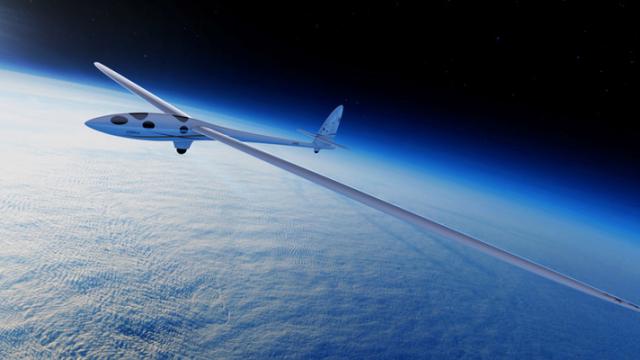A glider designed to float to the edge of space on air currents will attempt its first flight on Wednesday. Next year, the Perlan Mission II will launch to soaring altitudes of 90,000 feet, where it will harvest invaluable data on Earth’s atmosphere and climate.
Sponsored by commercial aeroplane manufacturer Airbus Group, the Perlan Project is on a quest to soar to record heights using its Perlan Mission II glider. The first Perlan Project set the the existing manned glider altitude record of 50,722 feet in 2006, by taking advantage of air currents known as “stratospheric mountain waves” — basically, the ocean waves of the sky. Our friends over at Flightclub explain:
From 1992-98, Perlan’s founder and NASA test pilot Einar Enevoldson collected evidence on a weather phenomenon that no one at the time even knew existed: stratospheric mountain waves. Like huge ocean waves, these waves of air are kicked off by strong winds blowing over the tops of high mountain ranges like the Andes. These waves of air then shoot straight up towards space. As a pilot, Einar quickly figured out that you can use a glider to ride those waves all the way up to near space. And he set out to prove it.
The Perlan Mission II, which began in 2014, intends to best its own record by a wide margin, gliding well into the stratosphere after launching from a gusty mountain ridge in the Andes. The team will be trekking down to Argentina next year in search of a launch site close to the southern polar vortex, an air current that drives mountain waves into the stratosphere.
Gliding to the edge of space will give scientists a chance to study interactions between different layers of the atmosphere, which could pave a path toward high-altitude commercial flight. It will also afford researchers the opportunity to study Earth’s climate from a dizzying new perspective:
“Currently climate change models are based on a theoretical understanding of how different layers of the atmosphere interact with each other,” James Darcy, a spokesperson for Airbus, told Climate Central. “Models are perhaps more simple than they should be. The scientific aim of Perlan will be to better understand the weather in the upper reaches of the atmosphere and build a more accurate model of what’s happening. That will drive more accurate predictability with respect to climate change.”
But first things first, the little glider needs practice. Next week — weather permitting — a small jet will tow the Perlan 2 to an altitude of 5,000 feet, where it will be released to fly around for about 45 minutes before landing. We’re keeping our fingers crossed!
Top image: Rendering of the Perlan Mission II glider, via Airbus
